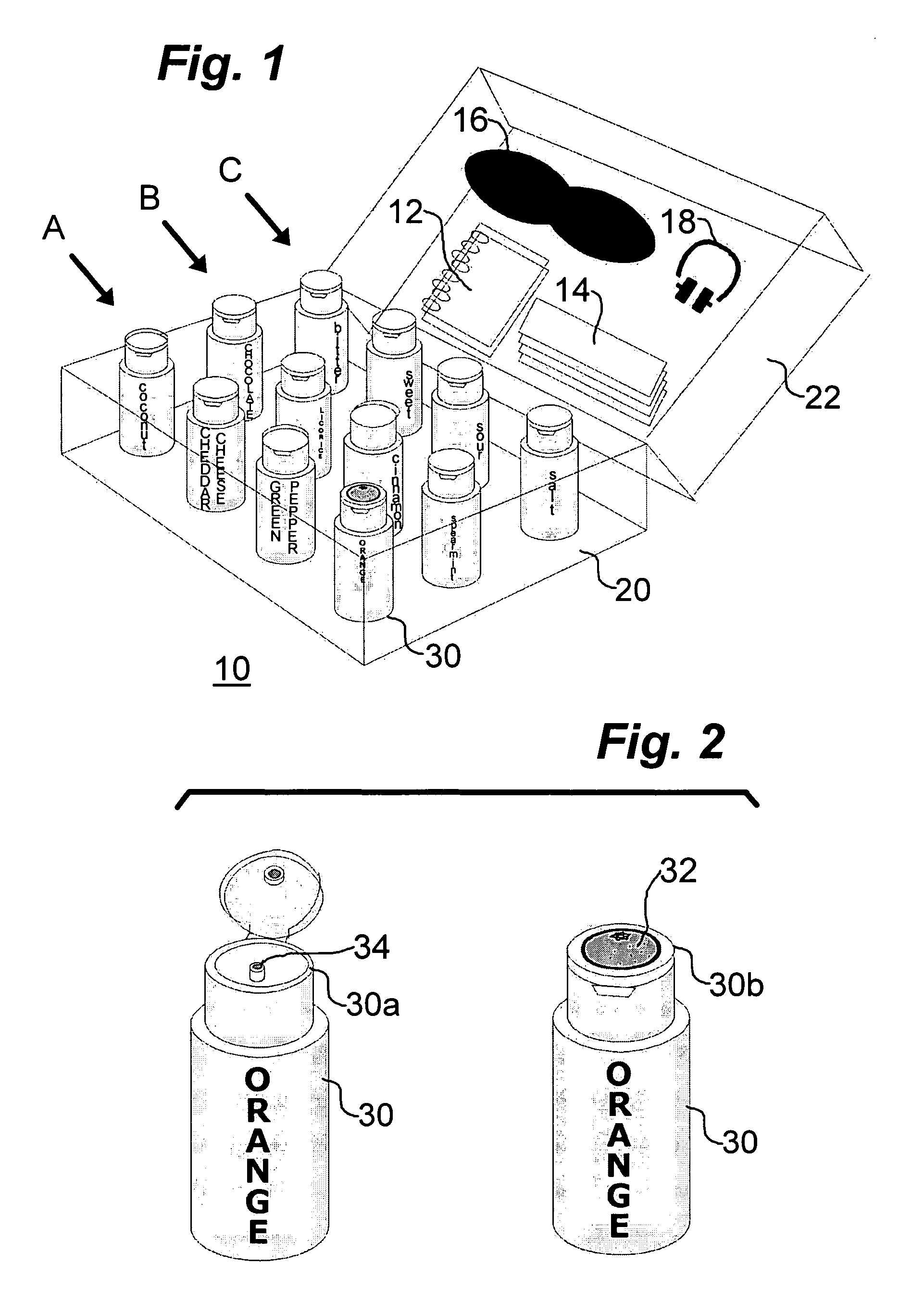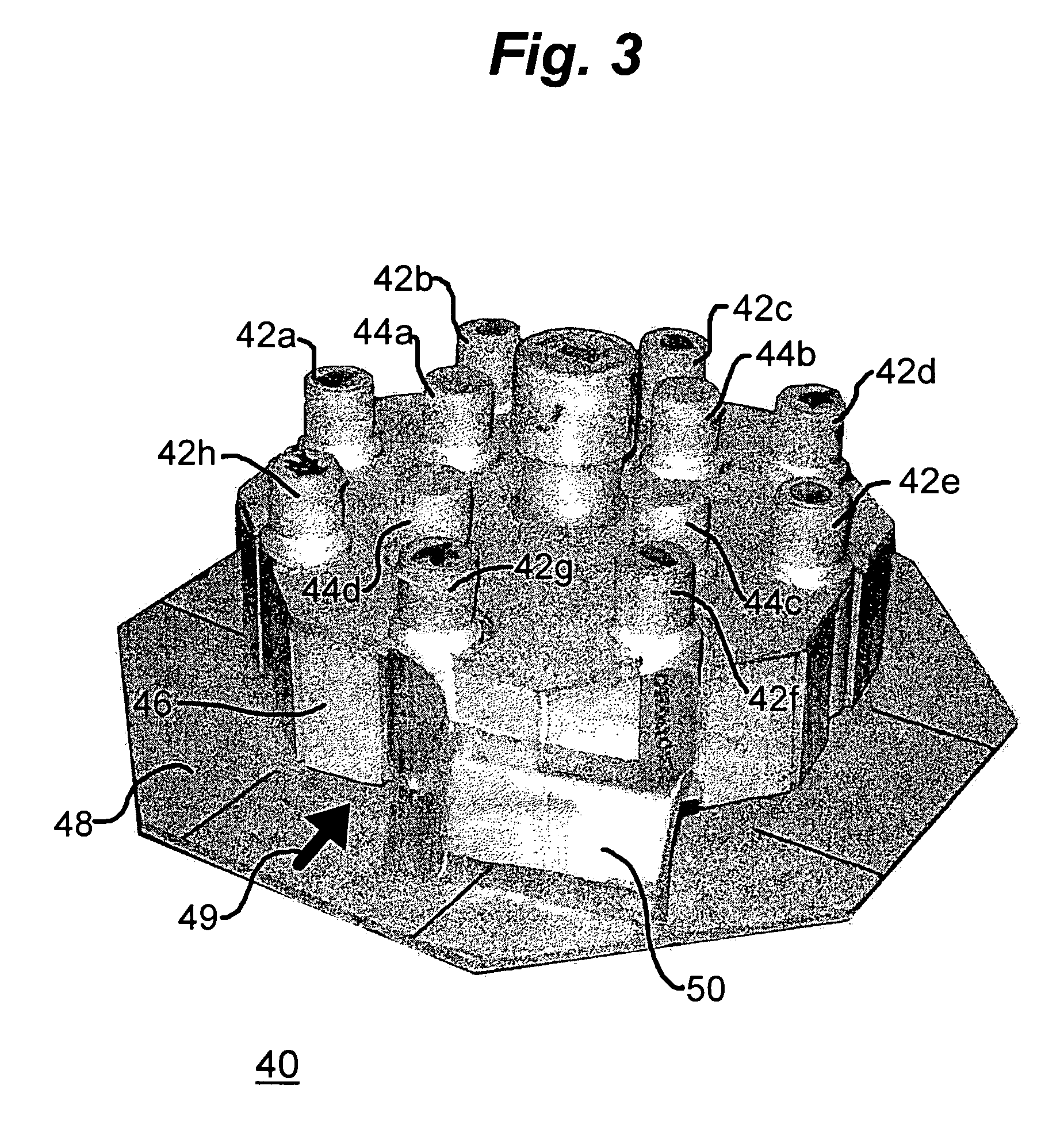System for correlating odors and tastes to objective elements
a technology of objective elements and odors, applied in the field of system for correlating perception to corresponding descriptive language, can solve the problems of most people not understanding the differences between taste and smell, the psychological understanding of odor perception, and the inability to understand taste and smell, etc., to facilitate an understanding of taste, enhance deductive and analytic skills, and enhance cognitive and perceptual flexibility
- Summary
- Abstract
- Description
- Claims
- Application Information
AI Technical Summary
Benefits of technology
Problems solved by technology
Method used
Image
Examples
Embodiment Construction
[0050]FIG. 1 is a simplified representation of a specific illustrative embodiment of the invention configured as a kit 10 having three rows A, B, and C, of four samples each. In this embodiment, rows A and B contain fragrances, and row C contains the basic tastes. There are additionally provided in this embodiment of kit 10 a plurality of fragrance cards 12, a supply of edible paper 14, and eye-mask 16, and a nose-clip 18. The kit is contained in an enclosure having a bottom contained portion 20 and a top portion 22 attached to each other by a hinge (not shown).
[0051] The kit contains four basic tastes, including salt (sodium chloride), sour (citric acid), sweet (sugar), and bitter (quinine sulfate), as identified on each sample of row C. In addition, the present embodiment of kit 10 contains a variable number of scents. As depicted in this figure, there are included in the present embodiment of the kit eight scents from various edible categories and with varying hedonic quality. T...
PUM
 Login to View More
Login to View More Abstract
Description
Claims
Application Information
 Login to View More
Login to View More - R&D
- Intellectual Property
- Life Sciences
- Materials
- Tech Scout
- Unparalleled Data Quality
- Higher Quality Content
- 60% Fewer Hallucinations
Browse by: Latest US Patents, China's latest patents, Technical Efficacy Thesaurus, Application Domain, Technology Topic, Popular Technical Reports.
© 2025 PatSnap. All rights reserved.Legal|Privacy policy|Modern Slavery Act Transparency Statement|Sitemap|About US| Contact US: help@patsnap.com


